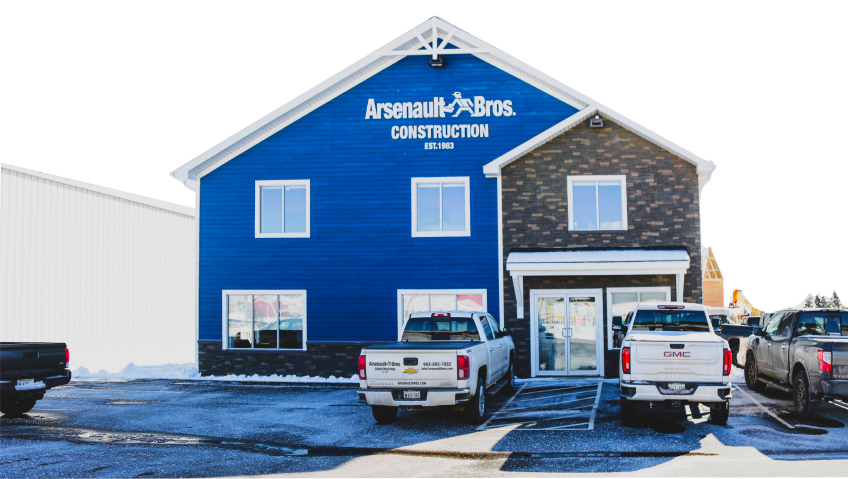Modern urban environments rest almost entirely on the shoulders of heavy civil engineering and construction and related industries, and the construction industry is under pressure to reform its impact on the environment. In North America, California is leading the way in tackling carbon emissions.
From roads to bridges, railways, and water purification plants, the world of heavy civil engineering is complex. As the conversation around cutting carbon emissions is growing more urgent, we take a closer look at a few of the current solutions taking center stage. Committing to a radical change in its greenhouse gas situation, California started working toward dropping its emissions through its Global Warming Solutions Act of 2006, also known as AB32. By 2030, the state aims to nearly halve these toxic gasses from what they were before the start of the new millennium.
Today, there are just under eight years left, and the state is reportedly well on its way to achieving this goal. The Environmental Defense Fund reports that, “After the first decade of AB32 implementation, California’s economy is growing while carbon pollution is declining. With innovative advancements in clean energy and energy efficiency, the state is well on the way to meeting its renewable energy target.” The next goal is an 80 percent reduction of the 1990 levels by 2050.
The process has not been an easy one, and professionals like Natural Resources Defense Council Senior Advocate Sasha Stashwick remind the government of its responsibilities, regularly. Stashwick was recently quoted by Ingrid Lobet in a piece for KCET about growing infrastructure threatening California’s emissions targets, as saying: “If hundreds of billions of dollars are going to be spent on repairing roads, bridges, highways, tunnels, this massive investment in American infrastructure, at least some portion of that spending should be going to low-carbon materials procurement.” According to Lobet, the southern part of the state has many concrete producers that can make reduced carbon concrete, but the government has been slow to embrace such materials in public infrastructure.
In addition, the state Building Standards Commission confirmed an amendment of its building energy efficiency standards on December 14 last year. These standards will be enforced as of January 1, next year. People appear enthusiastic about embracing the issue of weaning buildings off of fossil fuels. By the end of 2021, 48 cities and counties around the state were reported to have signed up to implement the statewide building energy codes.
Leaders in local government have been equally vocal. On February 9, 2022, Los Angeles councilmember Nithya Raman tweeted that, “The city’s buildings account for 43 percent of our carbon emissions—more than any other sector.” Raman also announced the city’s new commitment to planning net-zero construction to “move toward a green economy.” She proposed a marked shift away from natural gas toward electricity as the preferred energy source in new and old homes.
At the end of March 2021, the California Nevada Cement Association (CNCA) released its strategy to attain net-zero carbon emissions by 2045. In a prnewswire.com article on the subject, CNCA Executive Director Tom Tietz said, “We cannot get to net-zero alone, and this roadmap is also an invitation for state leaders, environmental groups, and stakeholders throughout the cement-concrete-construction value chain to collaborate on pursuing this bold goal.”
As the main component of concrete, cement and its manufacturing processes contribute significantly to annual global greenhouse emissions. Part of CNCA’s proposal includes making this more earth-friendly by minimizing emissions throughout the process, which includes fuel switching. Carbon capture, usage, and storage are other goals listed in the plan.
The article does, however, mention a surprising list of prohibitive factors that must be overcome before the strategy can be fully implemented. The industry’s adoption of the idea is only one obstacle. The report also mentions “statutory, regulatory, and permitting hurdles, market acceptance barriers, cost challenges, supply limitations, and technology gaps delay or constrain their deployment and limit their impact,” as legitimate concerns.
The association is determined to make a difference. “We recognize there are no shortcuts to achieve carbon neutrality. We look forward to working with key policy and regulatory decision-makers to urgently address barriers to emission reduction opportunities,” CalPortland Company President and Chief Executive Officer Allen Hamblen said in the same publication.
Since then, stakeholders have been responding positively to the association’s invitation. Oregon State University College of Engineering has just completed testing portland limestone cement, a low-carbon cement that is set to be used on future freeways throughout California. Caltrans, the construction company in charge of building the roads, predicts carbon savings of around ten percent per year from this sector thanks to the material’s limestone content, according to one report.
Jason Weiss, professor of civil and construction engineering and the Miles Lowell and Margaret Watt Edwards Distinguished Chair in Engineering, who headed the project, stated that the material is as good for this purpose as traditional materials while being cheaper. Moreover, 30-plus state departments of transportation have already started using the material as an alternative to standard portland cement.
When looking at how heavy civil engineering construction is beginning to implement net-zero carbon measures in California, it becomes clear that lawmakers are working to put legislation in place to achieve the commitments made at the Paris Agreement. Now it is a matter of creating, finding, and implementing the materials and methods that will make this goal possible. These are indeed exciting times for construction, and we are closely following the North American race to win the zero net-carbon challenge.






